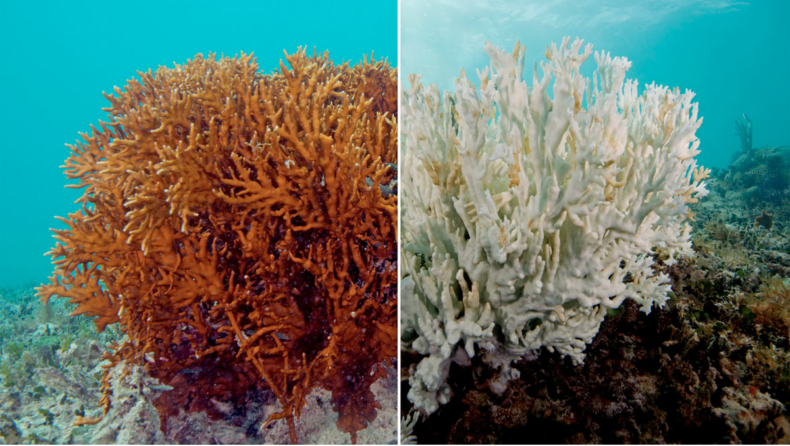In March, the sixth mass bleaching was confirmed. It raised grave concerns as Australia’s Great Barrier Reef did not witness beaching events so close together.

The Australian Institute of Marine Science (AIMS) has pointed out grave concerns ahead of this year’s study. In the words of Paul Hardisty, the Chief Executive of AIMS,
“In our 36 years of monitoring the condition of the Great Barrier Reef, we have not seen bleaching events so close together”
The Great Barrier Reef and Mass bleaching:
The Great Barrier Reef is home to around 1,500 species of fish and 4,000 types of mollusks. Some of which were suffering despite the La Nina’s cooling phenomenon. La Nina is currently the most influential factor in Australia’s climate.
The area consists of about 2,500 individual reefs, with more than 900 islands, that suffer from bleaching when corals expel algae living in their tissues, draining them out of their vibrant colors.
According to the Reef Authority, the corals can still recover if the conditions become moderate. It said,
“Weather patterns over the next couple of weeks continue to remain critical in determining the overall extent and severity of coral bleaching across the Marine Park.”
The mass bleaching report was released four days after the UN began a monitoring mission for assessment of the site.
The sixth mass bleaching:
Mass bleaching is caused when the stress of warmer seas causes the corals to lose their colors. The Great Barrier Reef Marine Park Authority stated that most of the marine park is hit by significant heat stress.
Bleached white coral colonies in several locations and dying coral reefs in some sections were shown in the aerial surveys. The authority said,
“Corals across the Marine Park remain vulnerable to the ongoing elevated temperatures.”
As per the survey, Australia’s Great Barrier Reef has recovered from bleaching events and storms to record levels. According to the officials, this is a piece of great news, but the new coral is extremely vulnerable. It can quickly be tarnished by climate change and other environmental threats.
The highest coral cover can be found in the northern and central parts of the reef. It has been following the same trend since the monitoring of the corals began around 36 years ago. A decrease was observed in the southern part.
The AIMS scan the reefs to check their healthy, annually, using divers, and aerial surveys.
According to the new results, suitable conditions will help the reef cover to recover. However, acute and severe disturbances are becoming periodic and longer in duration at the Great Barrier Reef. The damaging waves of tropical cyclones and coral-eating crown-of-thorns- starfish pose a major threat to the Reef.
The crown-of-thorn starfish is the second largest in the world, reaching up to three feet and preying on coral. Their spikes have venom that is toxic to humans and marine wildlife.
A new coral growth reef belonging to the species of Acropora is exposed to this threat.
The Great Barrier Reef is listed on the World Heritage list for 40 years because of its enormous scientific and intrinsic importance, making it one of the most biodiverse ecosystems in the world.
According to United Nations Education Scientific and Cultural Organization (UNESCO), ‘not enough is being done for the protection of the reef.
Because of climate change, the outlook of the icon is very poor. The Great Barrier Reef Marine Park Authority is the authority that manages the Great Barrier Reef.
This news brings a ray of hope for the conservation of biodiversity, while the challenges that lie ahead the way are significant.













